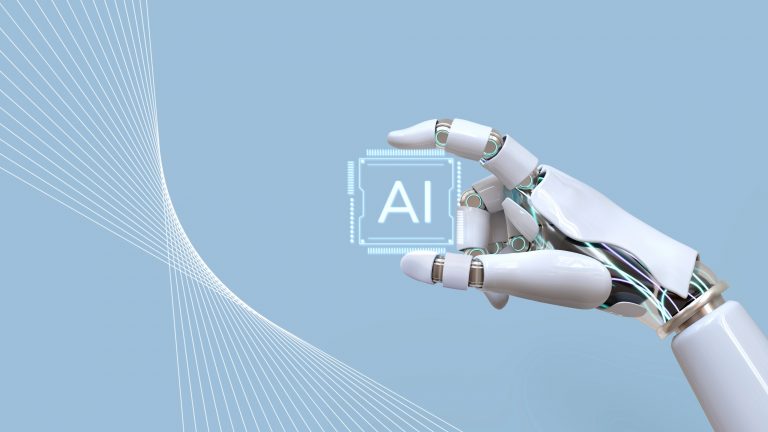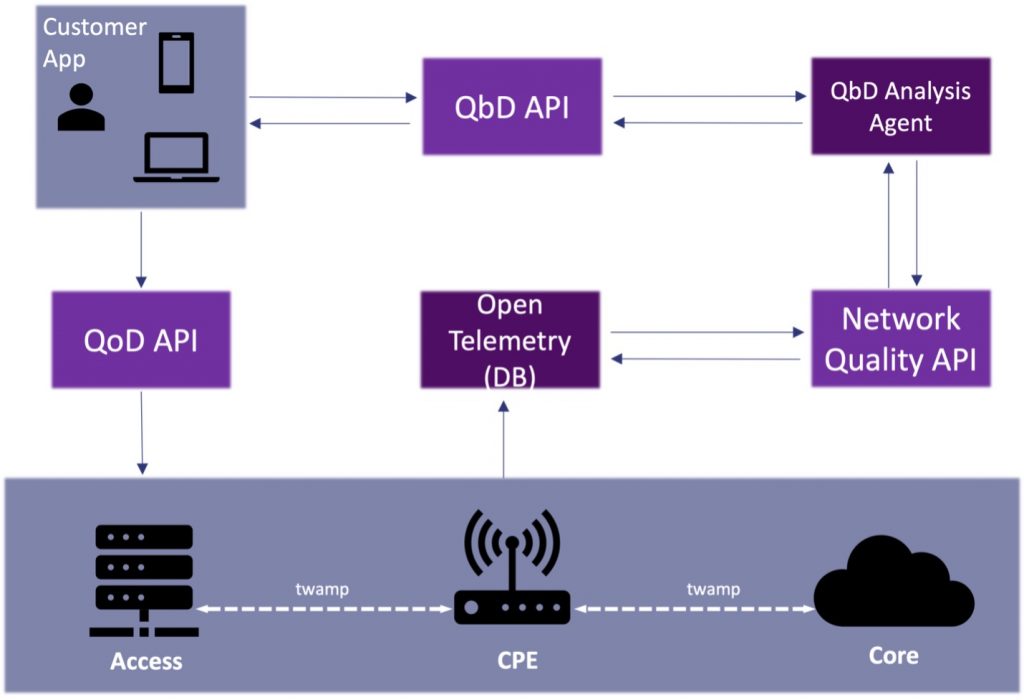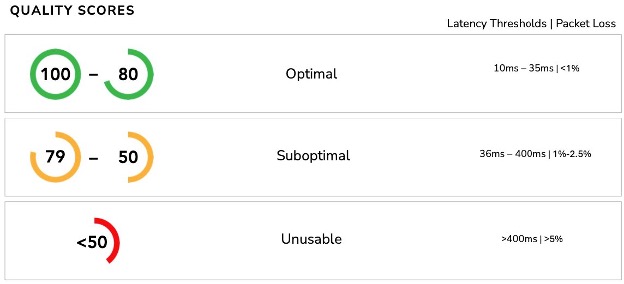Technology Vision
Reshaping the Customer Experience With Agentic AI

Key Points
- Agentic AI enables proactive network issue resolution, which can reduce costly truck rolls and customer support calls for broadband operators.
- Join us at SCTE TechExpo25 this week for two sessions dedicated to agentic AI and dive further into how automation can transform network operations.
Over the last year, the term agentic AI has become ubiquitous. It’s been described as everything from a personal assistant to a replacement for human workers. In reality, agentic AI is a powerful new form of automation that is most effective when given clear tasks, guided by expert information and integrated with human-in-the-loop workflows to ensure accurate and efficient automation.
In this blog post, we explain how agentic AI is revolutionizing automation by creating systems that don’t just follow pre-programmed rules but understand and adapt to their environment, make informed decisions and take autonomous action to address real-world challenges.
What Is Agentic AI?
Agentic AI is a system composed of multiple AI agents that collaborate to complete complex tasks. Key components include:
- Planner: A planner agent leverages expert information to break down complex tasks into steps that can be distributed among agents, ensuring alignment with organizational and industry best practices.
- Supervisor: A supervisor agent uses the plan identified in the previous step to coordinate work among specialist agents. It determines task completion and manages workflow.
- Specialist: Each agent has a specific role, executing steps in the plan using assigned tools and reporting back to the supervisor.
- Tool calling: Tools are executable functions that enable agents to take autonomous action by connecting AI agents to data sources and performing specific functions.
Enhancing the In-Home Experience
For broadband operators, in-home Wi-Fi issues are a leading driver of customer support calls. It’s difficult for operators to resolve these issues remotely, and sending a field technician is both time-consuming and costly.
CableLabs is developing an agentic AI system to autonomously and proactively detect and resolve in-home network issues, transforming both in-home Wi-Fi management and access network operations — and reducing the number of support calls operators receive. The key components of these systems include:
Continuous Wi-Fi KPI Streaming and Analysis
Using OpenTelemetry and OpenWRT, Wi-Fi KPIs including jitter, latency, airtime utilization and packet loss are collected in real time. Machine learning (ML) models correlate network and application-level KPIs to determine quality of experience.
Wi-Fi Impairment Detection
If degraded performance is detected, ML models identify specific impairments:
- Congestion: Too many devices or applications competing for airtime, leading to higher latency and jitter. In real-time apps like Zoom, this can cause choppy video, skipped frames, audio dropouts or lip-sync issues.
- Signal attenuation: Weak signals from distance or interference, reducing speed and reliability. Devices with a weak signal often transmit at slower speeds (lower Modulation and Coding Scheme, or MCS, rates), consuming more airtime and potentially slowing down the entire network.
- Interference: Competing signals from nearby Wi-Fi networks or non-Wi-Fi devices (like microwaves or Bluetooth) disrupt communication. In apartment or condo buildings, overlapping signals from neighbors’ routers can crowd the airwaves, reducing capacity for everyone.
- Sub-optimal channel selection: The access point remains on or switches to a channel that is already saturated or prone to interference, often due to misconfiguration or poor channel selection logic.
- Coverage gaps (possible access point placement issue): Persistent low signal strength and throughput in certain areas of the home, often caused by the access point (AP) being too far from devices or blocked by walls/furniture. While placement can’t be confirmed from Wi-Fi stats alone, patterns in signal and performance data can indicate that moving the AP may improve coverage.
- Sticky clients: Devices remain connected to a weaker AP or frequency band instead of roaming to a stronger one, causing sustained poor performance. Because the decision to roam is often controlled by the client device, it’s not always possible for the network to force the change. However, by detecting and reporting sticky client behavior, we can provide vendors and device manufacturers with the data they need to adjust roaming logic and improve performance.
Automated Resolutions
AI agents can apply QoS mechanisms automatically to restore performance or notify the user of actions they can take, such as relocating their router or adding a Wi-Fi extender or mesh node.
Detecting and Resolving Access Network Impairments
On the access network side, signal impairment detection remains a challenge, making it harder to resolve issues that degrade a user’s quality of experience. To address this, CableLabs is developing:
Robust Impairment Detection Algorithms
These algorithms analyze upstream and downstream KPIs and data for evidence of impairments. Instead of using hard-coded, deterministic algorithms, machine learning models are trained on robust datasets of upstream and downstream KPIs. Separate ML models are used for impairment detection in each direction, yielding improved accuracy compared to a combined model. This approach, when combined with data from numerous network configurations, ensures that the impairment detection process is robust across multiple operators without needing customization for each network.
Real-Time Telemetry Data Analysis
While machine learning models can be trained on infrequently collected data, the accuracy of these models improves dramatically when data are collected more frequently. Real-time or near real-time data collection produces more accurate impairment detection models and enables real-time or near real-time impairment detection. The ML models must also be lightweight enough to run at the edge to minimize data collection costs and ensure faster impairment detection by eliminating the need to send the data to a centralized location for processing.
Agentic AI Systems for Guided Impairment Resolution
The impairment detection algorithms integrate with agentic AI systems that autonomously collect the upstream and downstream KPIs and perform impairment detection. Once impairments have been identified, the agentic AI system uses expert information to provide step-by-step resolution plans for field technicians. Instead of providing static plans, the system guides field technicians through each step, pulls real-time data from their meters and updates steps based on collected data to ensure accurate and timely impairment resolution.
What Are the Challenges?
Real-Time Data Availability
The ability to obtain real-time, streaming telemetry data from devices on the network is essential to producing accurate impairment detection algorithms, without which the proposed resolutions will not succeed in resolving the quality of experience. While real-time data can be collected from devices on the network, Simple Network Management Protocol (SNMP) is usually the only option for collecting these data but it is not fast enough to support real-time data collection at the scale required for robust impairment detection. Consequently, real-time data streaming must be supported more robustly throughout the industry to enable autonomous impairment detection and quality of experience restoration.
Edge Compute Limitations
Traditionally, edge compute devices in broadband networks, especially customer premises equipment (CPE) such as cable modems and routers, have very limited compute resources. The limited compute capabilities of these devices present challenges to running inference with ML models and small language models (SLMs) on these devices. For lightweight ML models that are not based on neural networks, the compute capabilities of CPE devices are sufficient for performing inference. Some small neural networks and very small SLMs can perform inference with the compute resources on these devices, but larger neural networks and most “edge” SLMs are not capable of running on these compute resources. Additionally, the lack of access to graphic processing units (GPUs) or neural processing units (NPUs) on CPE devices further limits the feasibility of using machine learning models and SLMs for inference at the edge. This is because it results in much slower inference latency compared with GPU- and NPU-enabled models.
Edge Storage Limitations
There is an increasing number of options for SLMs that were designed to function as AI agents on edge devices. These SLMs are small enough to run in compute-limited environments and can typically be run using only CPU instead of requiring at least one GPU; however, the weights for even the smallest of these models exceed 1 GB. Therefore, in addition to requiring sufficient edge compute for low-latency AI agent responses, the edge device must also have sufficient storage to store the weights for these SLMs. While some edge devices have enough storage to hold the weights, the compute and storage capabilities of cable modems and routers are frequently insufficient for these use cases.
Data Privacy and Security
Making real-time, streaming telemetry data available to agentic AI systems at the edge enables real-time impairment detection and autonomous impairment resolution, but it also creates an attack vector and opens questions about data governance and privacy. While edge-hosted SLMs remove concerns about sending sensitive data to cloud large language model (LLM) providers, they open concerns about malicious code being embedded in the model weights and data exfiltration through model response analysis or backdoor attacks. Additionally, careful attention must be paid to how the interfaces that provide access to network data are constructed to prevent unauthorized access and unauthorized actions by the agentic AI system.
The Road Ahead
Agentic AI provides a powerful new form of automation, enabling agents to access and interpret information from their environment and external data sources, determine the appropriate course of action and autonomously take action to resolve issues within their environment.
By leveraging agentic AI at the edge, networks can become self-healing by detecting and resolving impairments autonomously and proactively addressing degradations and potential impairments before they impact subscribers’ quality of experience. In addition to acting autonomously to maintain network quality, agentic AI systems can guide field technicians through the impairment resolution process using expert information from veteran field technicians, reducing the time required to train new field technicians and drastically reducing mean time to resolution for impairments.
Find Us at TechExpo25 and Get Involved
If you’ll be at SCTE TechExpo25 next week in Washington, D.C., connect with our team to learn how your organization can contribute to shaping network automation with agentic AI. We will delve further into the technology’s capabilities during these sessions Monday, Sept. 29, and Tuesday, Sept. 30 (times are EDT):
- Agentic AI Transforming Network Operations: Join Paul Fonte and Shafi Khan for this panel discussion on how agentic AI enhances Wi-Fi, access networks and field operations — and, ultimately, the customer experience — using predictive analytics and real-time optimization. Part of the Intelligence at the Edge block, this session is 1-2:15 p.m. Monday in Room 151 AB.
- Engineering the Future: Cloud, AI and the Rise of Agentic Systems: Megan Collins joins this panel to discuss how AI and generative AI are transforming network operations to create next-generation network architectures. This session is part of Harnessing AI for Experience and Efficiency, which runs 4–5:15 p.m. Tuesday, also in 151 AB.
As AI continues to reshape network infrastructure, your voice and expertise are critical. Whether you’re an operator, vendor or software developer, we invite you to join us in shaping the future of these technologies. CableLabs offers many working groups focused on critical areas — everything from standardizing APIs to defining secure automation frameworks — where your contributions can drive real industry impact.
Network as a Service
Quality by Design Streamlines Network Management for Improved User Experience

Key Points
- Quality by Design, a part of CableLabs’ Network as a Service framework, leverages standardized APIs to facilitate communication between applications and the network.
- The specification provides real-time visibility into customer service issues and enables quick resolution.
Service providers and application developers are always striving to deliver the best possible experience for their end users. Optimizing network performance is critical. But in an era of isolated architectures — DOCSIS®️, optical and mobile — traditional network management can be challenging.
In addition, a lack of visibility between applications and the underlying network can make troubleshooting potential network impairments incredibly difficult at an individual user level. The situation is further complicated for application developers, who must navigate varying network conditions and limitations, potentially causing issues that may originate from within the applications themselves.
Recognizing these challenges, CableLabs has introduced Quality by Design (QbD) within the Network as a Service (NaaS) framework. Our goal is to unify and streamline network management.
What is Quality by Design?
The QbD specification is designed to enhance network performance and user experience through real-time monitoring and automated issue resolution. By leveraging a set of standardized APIs, QbD facilitates two-way communication between applications and the network. Applications can therefore act as network monitoring tools, sharing real-time key performance indicators (KPIs) with the network. Figure 1 shows the QbD design.
Figure 1: QbD Overview
This approach not only provides visibility into user experiences but also enables quick identification and resolution of network issues by correlating application KPIs with network performance data. In this way, QbD swiftly addresses any problems, whether rooted in the network or the application. Customer events are triggered based on a quality score, as Figure 2 shows.
Figure 2: Sample Thresholds for Video Conferencing Applications
QbD enables the swift diagnosis and resolution of network impairments. Automated solutions can then be deployed to address these issues promptly, minimizing disruptions and maintaining high service quality. The inclusion of automated solutions reduces the incidence of excessive network alarms and ensures rapid response to suboptimal application performance.
Impact on End Users
Many factors can lead to end users experiencing degraded quality and suboptimal application performance. QbD helps to address these potential situations by correlating application events with potential underlying network events to determine where the root cause of the problem is occurring through the exchange of KPIs between the application and the network.
This approach allows both applications and networks to dynamically respond to changing conditions, enhancing the customer experience. By turning applications into network quality monitoring agents that actively participate in network management, QbD fosters a more seamless and high-quality user experience.
CableLabs' Role in Quality by Design
CableLabs has been at the forefront of advancing network technologies and standards, and our role in the development and implementation of QbD is a testament to our commitment to innovation. We recognized the limitations of traditional network management, where disparate DOCSIS, optical and mobile networks were often managed on separate platforms with different operations, leading to difficulties in identifying when an individual customer is not getting the level of service they desire.
The QbD APIs have been contributed back to CAMARA, a Linux Foundation Project aligning these intent-based APIs for the broader telco industry. We hope to have the first version published in the near future. This capability transforms applications into proactive participants in network monitoring and management, providing a more granular and accurate view of network performance.
Furthermore, CableLabs has led the charge in integrating automated response mechanisms within the QbD framework. This automation is crucial for reducing the time and effort required to identify and resolve network issues. By leveraging machine learning algorithms and advanced analytics, QbD can correlate application KPIs with network telemetry data, pinpointing potential problems with high precision.
Another key aspect of CableLabs' role in QbD is fostering a collaborative ecosystem among network operators and application developers. By providing a standardized framework and tools, CableLabs encourages these stakeholders to work together, share insights and develop best practices for network and application performance optimization. This collaboration not only enhances the capabilities of individual entities but also contributes to a more robust and resilient overall network infrastructure.
How to Get Engaged
As the digital landscape continues to evolve, ensuring optimal network performance and seamless user experiences becomes increasingly crucial. We invite network operators, application developers and other stakeholders to explore QbD’s transformative potential. Members can request to join our NaaS working group.
By adopting QbD, you can revolutionize your network management practices, deliver unparalleled user experiences and stay ahead in a competitive market.
Visit CableLabs to learn more about how you can implement QbD within your network infrastructure and join the movement toward a more integrated, efficient and responsive digital future. Let's work together to set new standards in network quality and user satisfaction!





